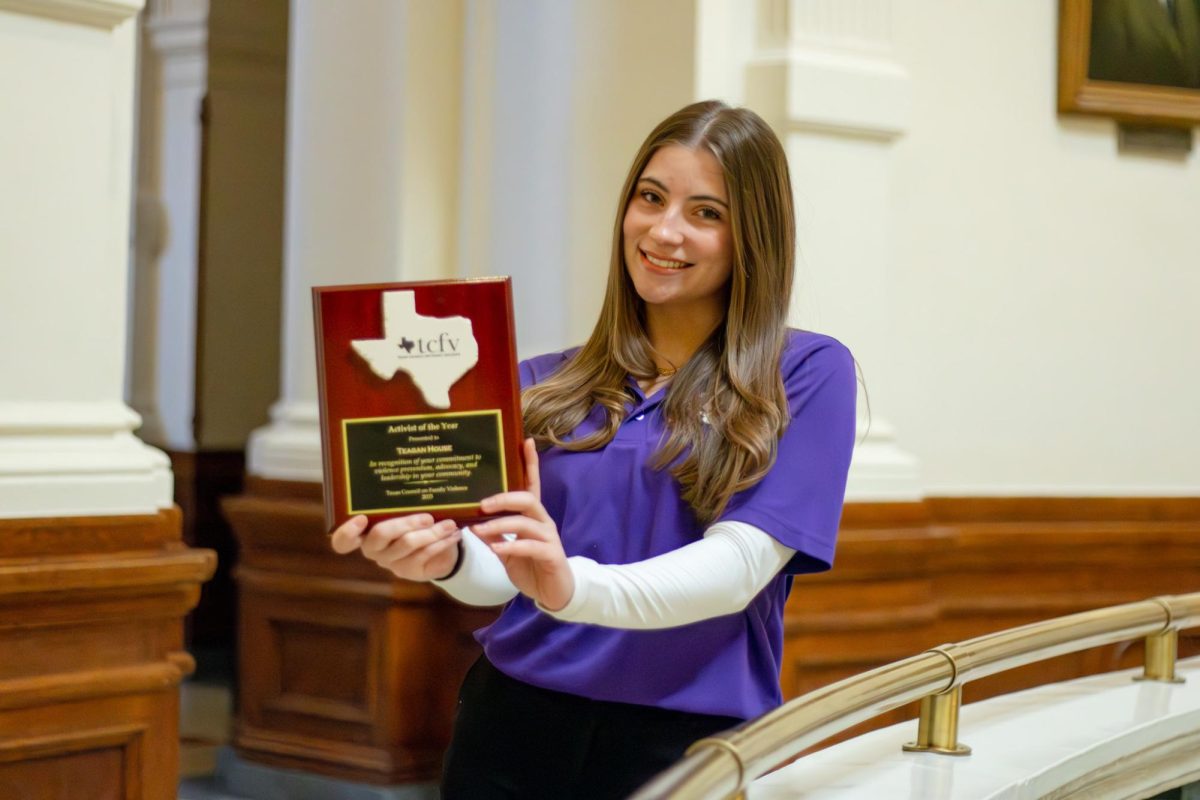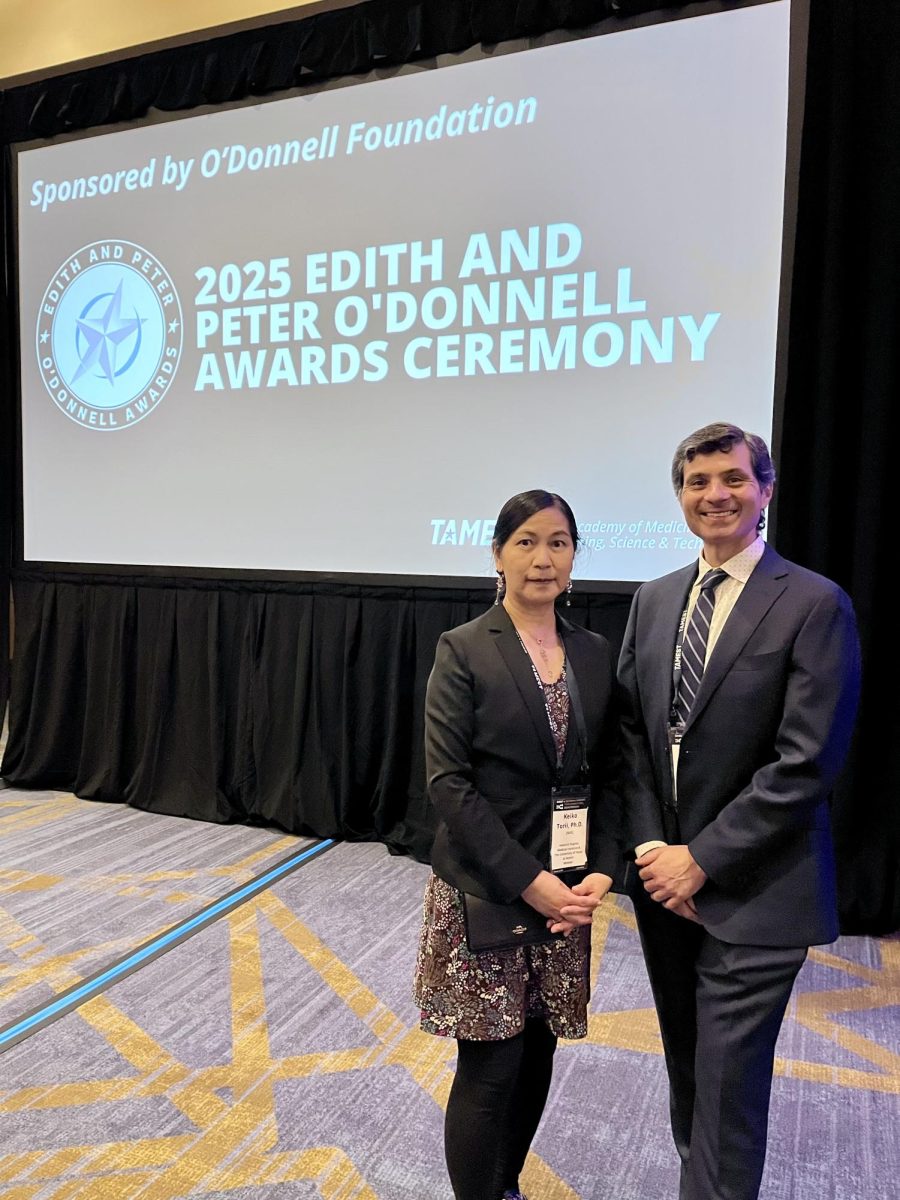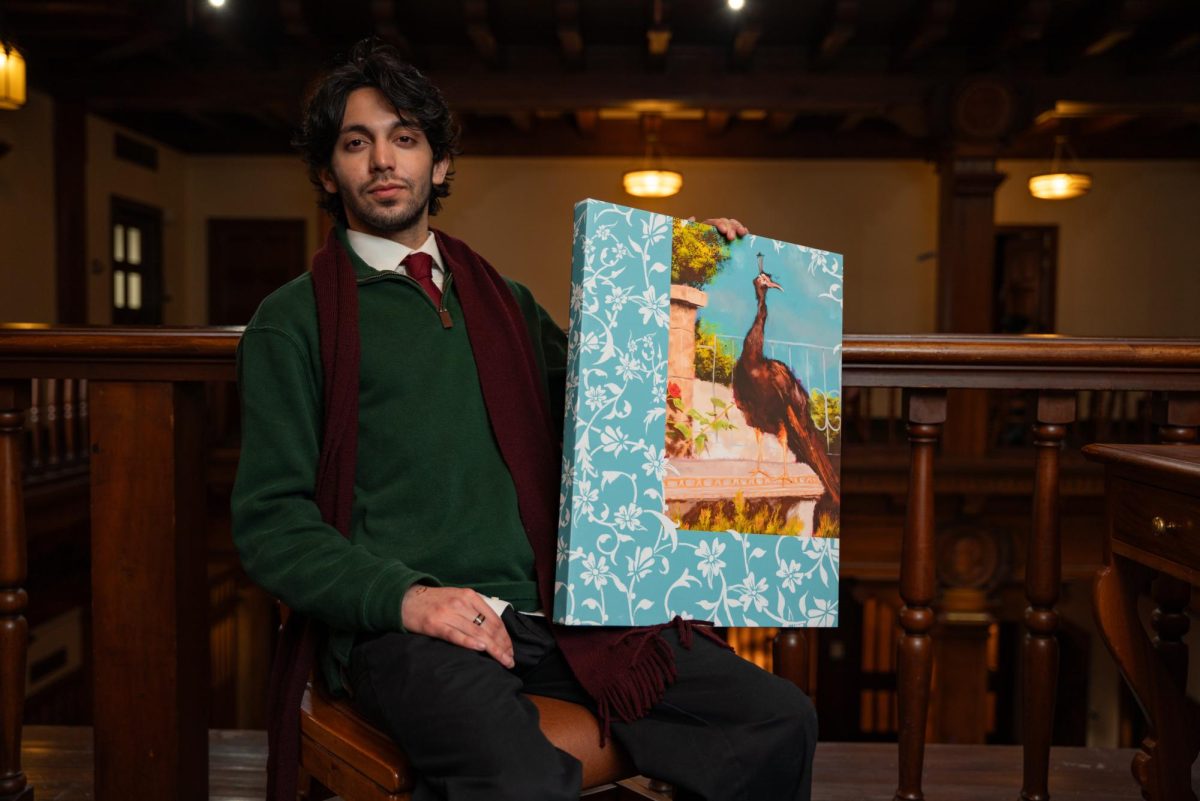Posted outside of Service Building 101, which houses UT’s Locks and Keys office on the corner of 24th Street and San Jacinto Boulevard, there is a short brass sign that simply reads “keys” — a short and sweet description of what’s actually happening inside.
A walk past the sign and into the nondescript maintenance building reveals staff and students waiting for new keys to shoot out of a pneumatic tube that’s built into the counter, similar to what’s used at a bank drive-through. A small, printed warning advises anyone who can’t handle the loud noise it makes to stand back, and sure enough, almost everyone in the room jumps a little bit when it erupts. The flurries of movement and occasional blasts of the tube are just the beginning, however.
A trip downstairs to “The Dungeon,” where David Garza, one of UT’s four locksmiths, is cutting keys, is necessary to really understand what the brass sign outside is getting at.
“All the work is happening here,” said Garza, who has been a UT locksmith for about 10 months. “People see us when we’re putting a lock in, and they’re like, ‘Wow, that was it?’ [We’re] checking the biddings, cutting the keys, making sure everything’s straight, making sure nothing’s going to cross. You don’t want your neighbor-down-the-hall’s key to be able to work on your door, so we have to check to make sure. A lot goes into it; what the public sees isn’t quite the way it is. It’s a lot of fun.”
A loud buzzer announces that a key is ready to be cut, so Garza throws on a pair of safety glasses and grabs the container that carries the key from the pneumatic tube. He pulls out his newest job and clamps it into one of the four key-cutting machines. A muffled shriek — the sound of metal grinding metal — drowns out all conversation for a few seconds as the locksmith cuts a duplicate key. Thirty seconds later, he flips on a mechanized wire brush to wipe the new key clean of metallic dust, sticks it in its container and launches it back up the pipes.
“We have four machines, and during the fall, which is our August and September rush, we’ll have four machines cutting keys all day long,” said Gary Killinger, the supervisor of Locks and Keys. “The students return to campus, the staff returns to work and boy, those key machines sure take off. Everybody needs keys. It’s pretty hectic; it’s like Santa’s workshop. Everybody’s running around crazy.”
Killinger said that Locks and Keys cuts more than 20,000 keys each year — an average of 120 keys per day, except during the fall rush, when the number of keys cut every day can shoot up to about 400. Unlike most facility-maintenance services, which are generally assigned to one of the four zones that the Forty Acres is divided into, Locks and Keys serves the entire campus (including the Lake Austin Center, the Pickle Research Campus and other off-campus properties). It keeps the four guys who work in “The Dungeon” on their toes.
“They take care of the entire campus,” Killinger said. “There are 260 on- and off-campus buildings that Locks and Keys maintains, so it’s a lot bigger scope than people think. It’s a lot more on us, and we’re actually one of the smallest shops with three locksmiths and a crew leader. But we do pretty darn-gone good.”
Besides cutting keys, the four locksmiths routinely work on projects that require them to ascend “The Dungeon” stairs and install new locks on doors around campus that need them — a tall order because of all the new construction. And depending on what’s on the other side of the door, being a UT locksmith outside of the workshop can be an interesting experience.
“We get to see everything,” Garza said. “I’ve been to the stadium re-keying places. I mean, you know, it’s the stadium — wow! I went to the Harry Ransom Center one time to change a lock — and it was just a closet door, that’s all it was — but when I got there like the first movies ever were inside. They had copies of the first movies ever! It was just amazing to be around such historical stuff. It’s the stuff I see in my day-to-day. I just enjoy working here because of where I’m at. Everything that comes with it makes it so much better.”
It’s not just the unique settings that make the job worth it for Garza. The sense of camaraderie he shares not only with his locksmith brethren, but all of his Facility Services co-workers, is something unique to being a UT locksmith.
“[The locksmiths] are close ‘cause we work with each other all day,” Garza said. “But UT itself kind of has that band-of-brothers kind of feel. All the people in the brown shirts — the facilities and maintenance guys — everywhere I go everybody’s waving at each other. You see somebody that you’ve worked with for 10 years, and even though it’s not directly next to each other, when you go to the same buildings and see the same guys doing the same stuff like we do, you get to know each other. It’s greater than just us four, it’s really the whole facilities services. I’ll be in my car driving down the street and have 20 people waving at me.”
The buzzer sounds and Garza dons his safety glasses once again.
“Customers are waiting for keys, so cutting takes priority,” Garza said as he prepared to fire up the machine. “Even if one of us is out doing a service call because somebody’s locked out, someone needs to be here. I mean we still got to watch the tube. In about another hour or two, that tube is going to start getting flooded with keys.”




















